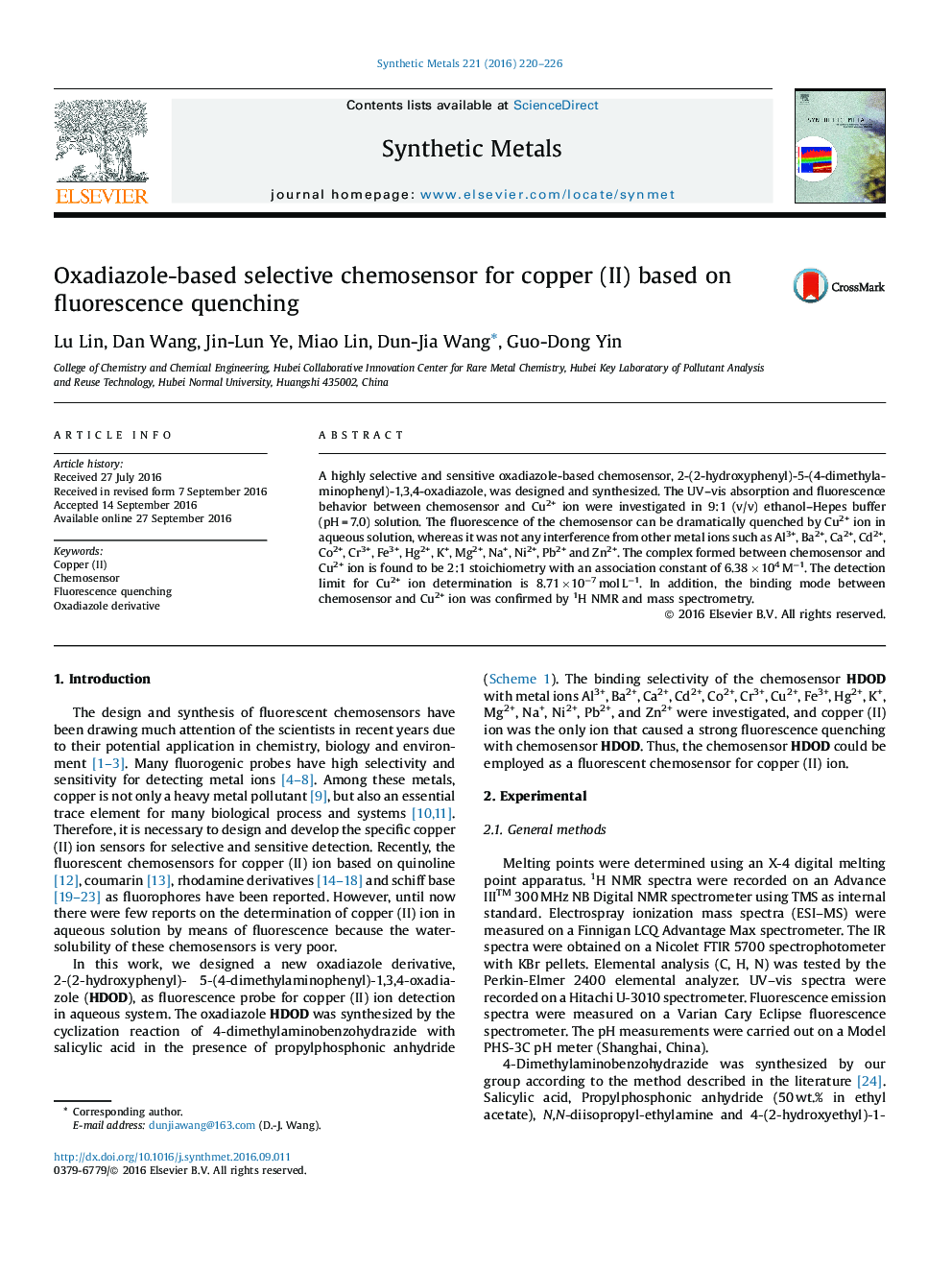| کد مقاله | کد نشریه | سال انتشار | مقاله انگلیسی | نسخه تمام متن |
|---|---|---|---|---|
| 5435590 | 1509356 | 2016 | 7 صفحه PDF | دانلود رایگان |

- A new oxadiazole (HDOD) was synthesized as a fluorescent chemosensor for Cu2+.
- The chemosensor HDOD exhibited a highly selective fluorescence quenching towards Cu2+.
- The chemosensor HDOD had good selectivity and sensitivity to Cu2+ in aqueous solutions.
- The sensing property was monitored by UV-vis, fluorescence, NMR and MS spectroscopy.
A highly selective and sensitive oxadiazole-based chemosensor, 2-(2-hydroxyphenyl)-5-(4-dimethylaminophenyl)-1,3,4-oxadiazole, was designed and synthesized. The UV-vis absorption and fluorescence behavior between chemosensor and Cu2+ ion were investigated in 9:1 (v/v) ethanol-Hepes buffer (pH = 7.0) solution. The fluorescence of the chemosensor can be dramatically quenched by Cu2+ ion in aqueous solution, whereas it was not any interference from other metal ions such as Al3+, Ba2+, Ca2+, Cd2+, Co2+, Cr3+, Fe3+, Hg2+, K+, Mg2+, Na+, Ni2+, Pb2+ and Zn2+. The complex formed between chemosensor and Cu2+ ion is found to be 2:1 stoichiometry with an association constant of 6.38 Ã 104 Mâ1. The detection limit for Cu2+ ion determination is 8.71 Ã 10â7 mol Lâ1. In addition, the binding mode between chemosensor and Cu2+ ion was confirmed by 1H NMR and mass spectrometry.
179
Journal: Synthetic Metals - Volume 221, November 2016, Pages 220-226